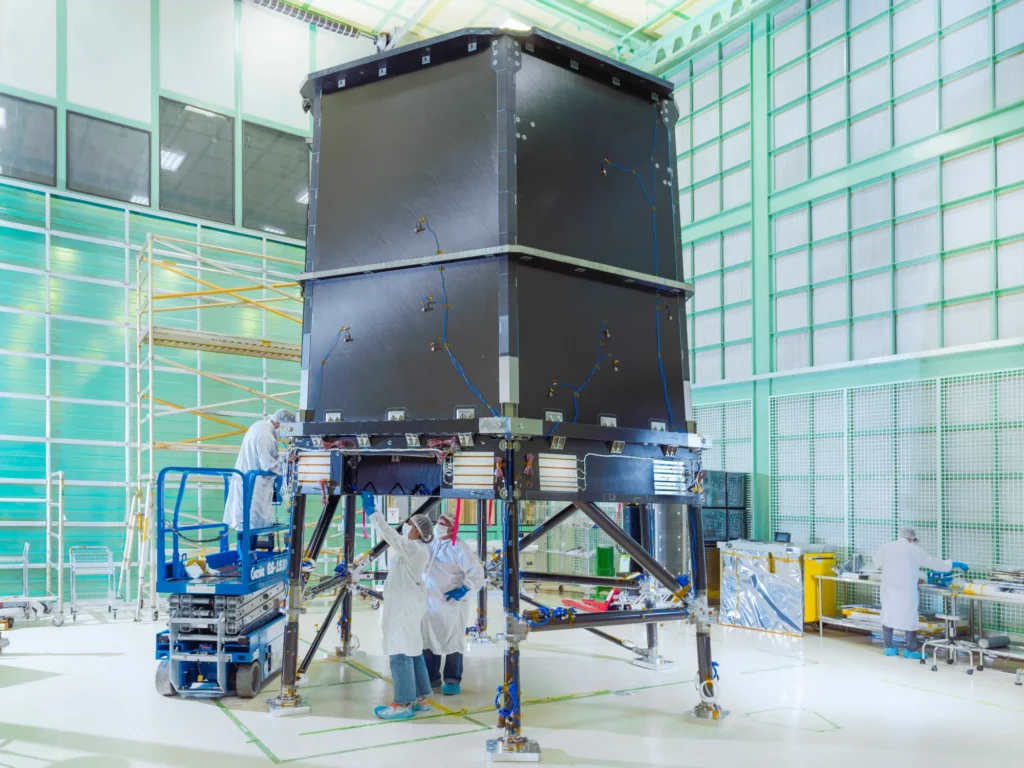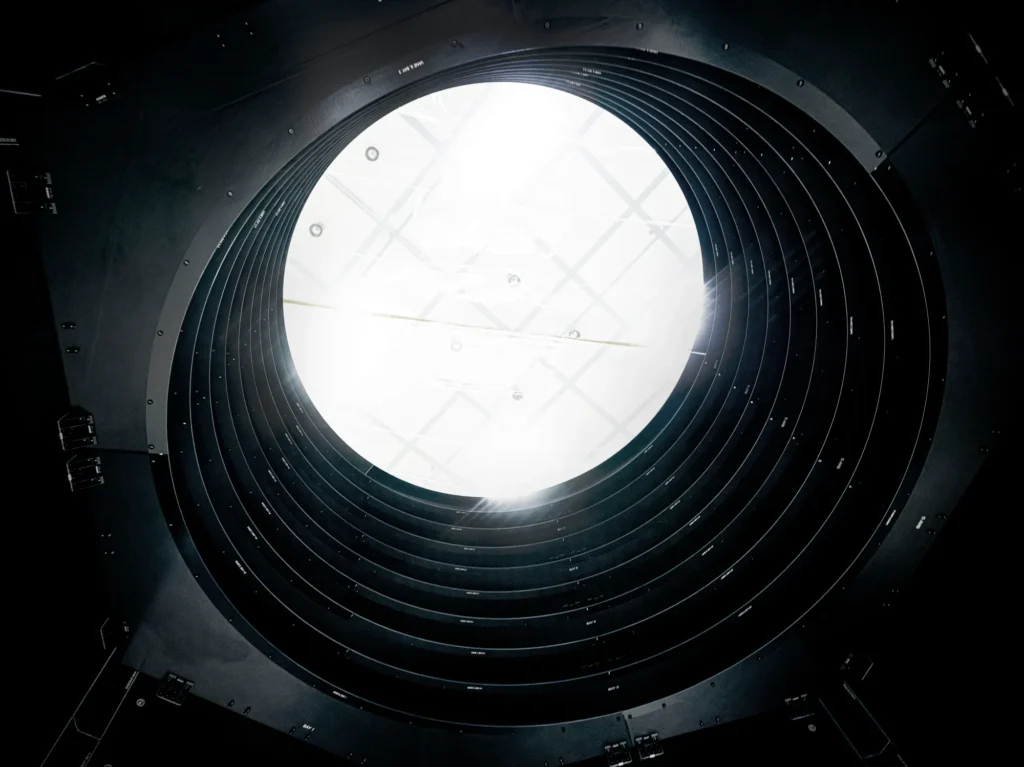One of the key components of the new Roman Space Telescope has successfully passed an important test. NASA engineers spun it in a centrifuge.

The Roman Telescope is scheduled to be launched in 2027. It will become one of the new generation of observatories that will replace Hubble and James Webb. Roman is designed to observe large-scale structures of the Universe and study the impact of dark matter on galaxies. Another task of the mission is to search for and obtain direct images of exoplanets.
Currently, the Roman Telescope is being assembled and NASA specialists are actively testing its components individually. Recently, they tested a structure called OBA (Outer Barrel Assembly). This is the outer shell of the telescope, designed to maintain a stable temperature and protect it from scattered light. It is 5 meters high and 4 meters wide.
The OBA’s design is a little like a house on stilts. The “house” is a shell and a connecting ring that surrounds the telescope. They will be equipped with heaters so that the telescope mirrors don’t experience strong temperature fluctuations. For extra protection, the outer part of the barrel is basically made of two types of carbon fibers mixed with reinforced plastic and connected with titanium fittings. These materials are both rigid (so they won’t warp or sag during temperature fluctuations) and lightweight (to reduce launching stress). Another weight-saving measure is that the area between the space telescope’s panels is occupied by ultra-thin metal honeycombs. As for the “stilts”, they will surround the Roman instruments like scaffolding and connect the outer shell of the telescope with the spacecraft.

Since the OBA is too large to fit entirely in the centrifuge, engineers tested the “house” and “stilts” separately. During the test, the telescope’s components were spun to a speed of 18.4 rotations per minute. This created a centrifugal force equivalent to seven times the Earth’s gravity. The Roman’s shell successfully passed this test.
In 2025, the Roman’s shell will undergo thermal vacuum tests and then vibration tests. After that, it will be integrated with the rest of the observatory.
According to NASA


